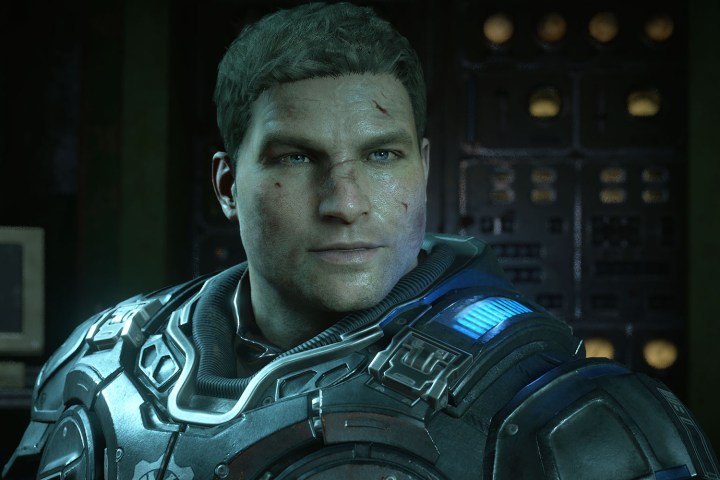
“Our focus on PC is to deliver a highly optimized, customizable experience first and foremost,” he said.
According to Rayner, Gears of War 4 will have “proper” unlocked frame rate support on day one. The game will also be optimized for multiple processor cores thanks to Unreal Engine 4 and custom modifications made by The Coalition. This will keep the game from being “CPU-bound” and provide the GPU with breathing room for higher framerates or enhanced visual quality. That said, the single-player campaign will not be locked to 30 frames per second.
In addition to those features, Gears of War 4 for the PC will support any resolution with a “sensible” dynamic field of view, including ultra-wide. It will also have an increased texture resolution up to 4K for select texture groups. There will even be a benchmark mode, and full keyboard and mouse input remapping, including cover/run and roll split.
“Far more comprehensive video settings, today we sit at 28 different settings and we’re thinking of ways to add more for people to really have full control,” he noted. “Along with more settings, we’re putting extra time into making it clear what impact a setting will have on GPU/CPU/VRAM so there is a clear correlation between a setting change and its performance impact.”
Finally, he said that the game will support super-sampling, thanks to a system based on the dynamic scaling created for the Xbox One. Players can super-sample up to 4K, enable dynamic scaling, and then set the amount of scaling they actually want to allow.

In addition to talking about the PC version of Gears of War 4, the interview brought up the problems that initially surrounded Gears of War: Ultimate Edition when it hit the Microsoft Store back in March. The game originally made its debut on the Xbox One in August 2015, but The Coalition added support for DirectX 12 and ambient occlusion before it hit Windows 10 earlier this year.
That changeover was supposedly one of the reasons behind a lot of stuttering and other display problems in the game at launch, even for owners of high-end machines. That led to an immediate patch, updated drivers, and even a special fix from AMD that addressed the ambient occlusion problem on Radeon graphics cards.
“Gears of War: Ultimate Edition was a great learning experience for us,” Rayner admitted. “We were the first major DX12 UWP title to market and while we did have issues to work through at launch, we managed to get through them quickly. Speaking directly to our community was a big deal for us post launch and they were fantastic at providing feedback, which we are adapting, where appropriate, into Gears 4.”
That game established a close relationship between The Coalition, and GPU makers AMD and Nvidia. The two latter companies are currently looking at builds of Gears of War 4 for the PC, and are providing feedback on how to get the best performance out of their graphics chips. He said The Coalition is confident that Windows 10 gamers will have a great launch experience when Gears of War 4 invades this fall.


